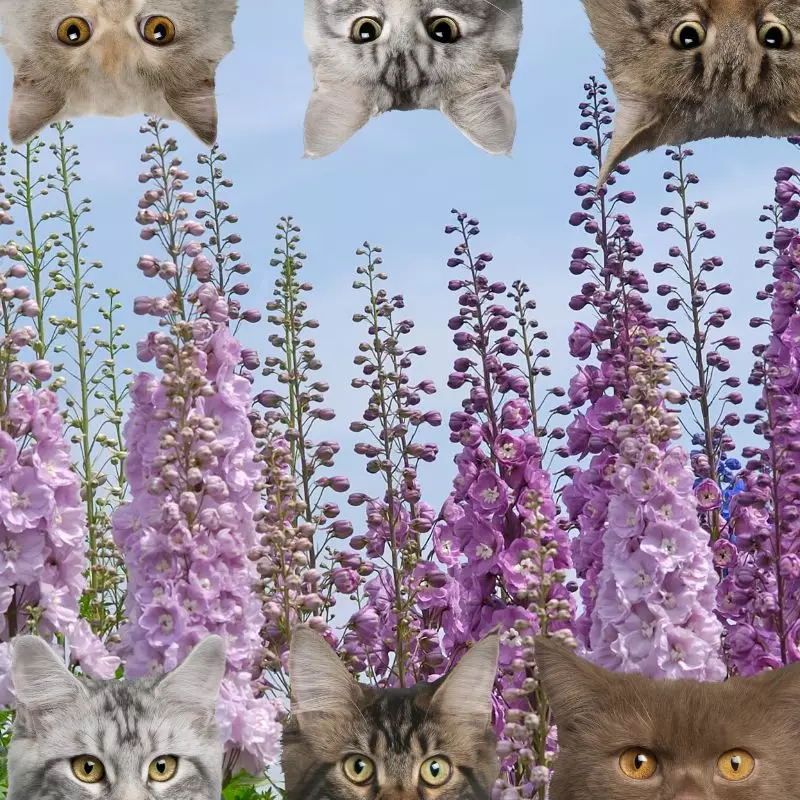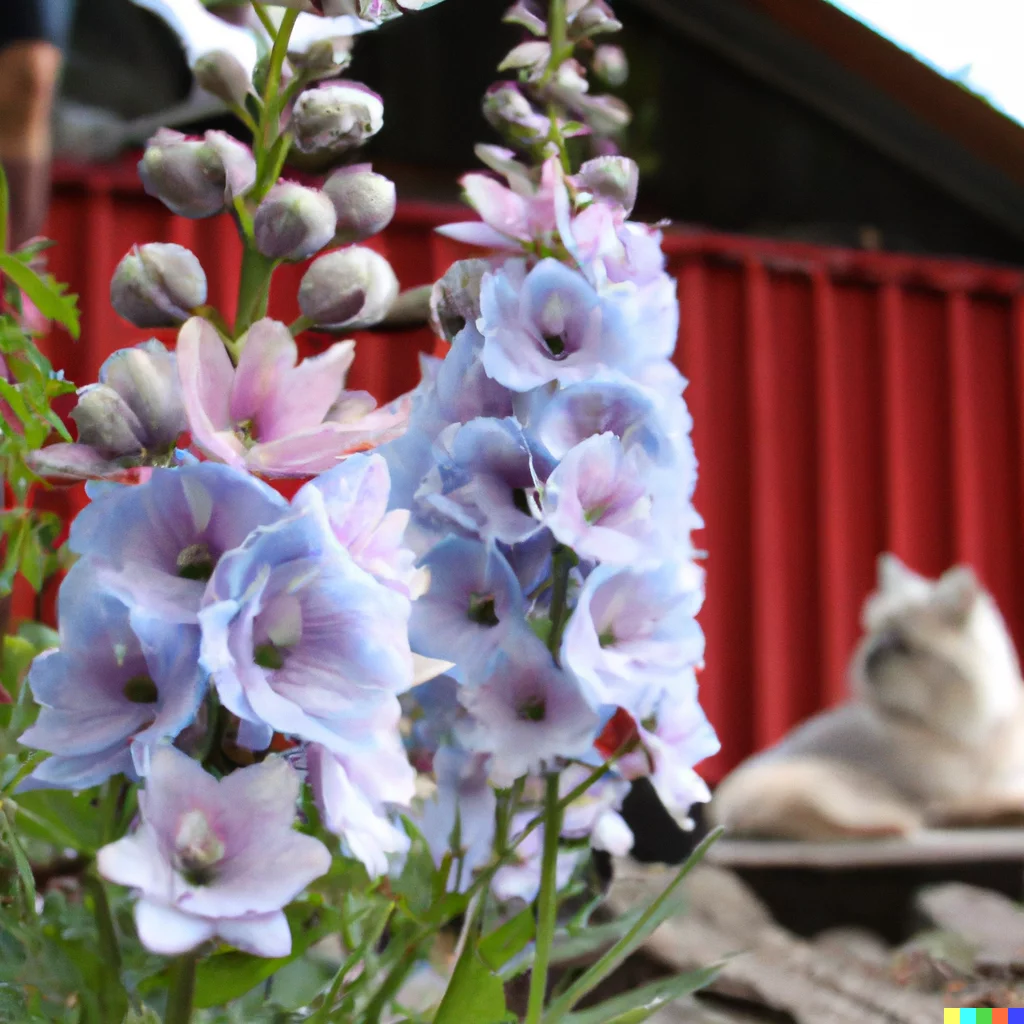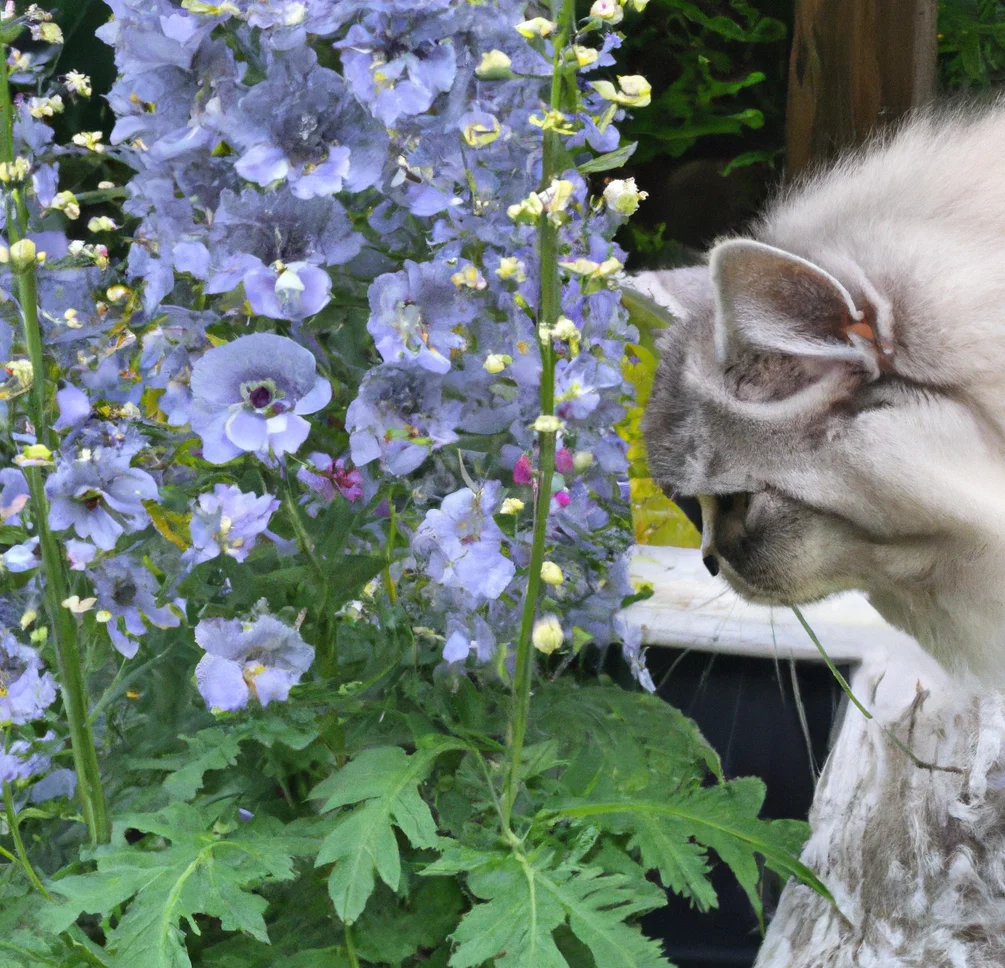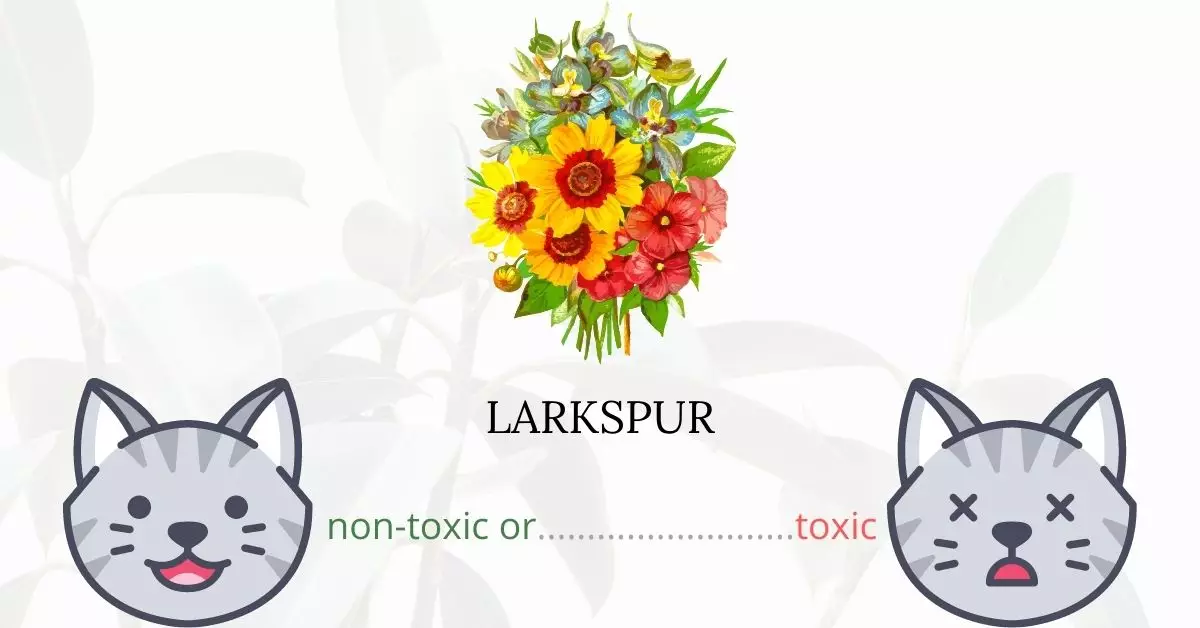Yes, Larkspur is indeed toxic to cats.
Written in collaboration with a team of experienced DVMs (doctors of veterinary medicine), this article provides accurate and up-to-date information on the risks associated with Larkspur and its effects on cats. Through their expertise and our rigorous research on high-authority websites like ASPCA and PetMD, we aim to offer a comprehensive insight into this topic.
Larkspur contains harmful components such as cardiac glycosides, saponosides, and the ranunculoside derivative, protoanemonine. When consumed by cats, these toxins can lead to gastrointestinal upset, breathing difficulties, and disruptions in the cardiac and nervous systems. Notably, protoanemonin is formed from the glucoside ranunculin through an enzymatic process after ingestion, causing immediate irritation in the mouth, mucosa, and esophageal lining. This can further lead to mouth and throat blisters or rashes. Should a cat consume a large quantity of Larkspur, the risk escalates to potential digitalis-like symptoms, resulting from the cardiac glycosides helleborin, hellebrin, and helleborein. These toxins can induce severe neurological and cardiovascular complications, which, in the worst scenarios, can be fatal.
Clinical Signs of Larkspur Poisoning in Cats

When a cat comes into contact with, smells, or consumes the larkspur plant, they may exhibit various clinical signs due to the toxins present in the plant. Each symptom has a root cause, primarily linked to the toxic compounds found in larkspur:
- Vomiting and Diarrhea: These are common reactions when a cat’s digestive system tries to expel the harmful substances ingested. Larkspur contains toxins that irritate the gastrointestinal tract, leading to these symptoms.
- Excessive Drooling: The protoanemonine found in larkspur causes rapid irritation in the mouth, mucosa, and esophageal lining, prompting the cat to drool profusely.
- Mouth and Throat Tingling: This sensation is a direct response to the irritation caused by the protoanemonine after ingestion or contact.
- Abdominal Pain and Purging: The gastrointestinal upset caused by the toxins in the plant can result in abdominal discomfort and the urge to purge the toxic substances from the body.
- Weakness: As the toxins interfere with the normal functioning of the cat’s systems, they may feel fatigued and display an overall lack of energy.
- Labored Breathing: Respiratory distress arises from the influence of toxins on the respiratory system, making it hard for the cat to breathe.
- Bradycardia or Slow Irregular Pulse and Idioventricular Rhythm: The cardiac glycosides in larkspur affect the heart’s rhythm, leading to these irregularities.
- Bundle-Branch Block, Ventricular Fibrillation, and Asystole or Flatline: These are more severe cardiac symptoms resulting from the cardiac toxins helleborin, hellebrin, and helleborein found in larkspur, which can affect the electrical conductivity of the heart.
- Delirium and Aggression: Neurological disturbances are due to the toxins’ effect on the cat’s nervous system, which can alter their behavior and mental state.
- Convulsions: A severe neurological symptom, convulsions indicate a strong toxic reaction affecting the cat’s nervous system.
- Death due to Respiratory Collapse: In extreme cases, the combined effects of larkspur toxins on various systems can lead to respiratory failure, resulting in fatality.
Understanding these signs and their causes can help cat owners recognize a potential larkspur poisoning and seek immediate veterinary care.
First Aid and Treatment of Larkspur Poisoning in Cats

When a minimal amount of the larkspur plant is consumed, the treatment usually consists of induced vomiting or stomach lavage, followed by the administration of activated charcoal. The veterinarian may use antacids to treat gastrointestinal distress. The cat will be closely monitored to ensure that no more major clinical indications emerge.
It may be required to inject intravenous or intramuscular atropine to stabilize your cat if cardiac abnormalities are developing. Bradycardia can be treated with atropine, which is administered slowly through an IV. Monitoring kidney function is also critical, as is keeping a constant eye on heart activity for arrhythmias.
Recovery from Larkspur Poisoning in Cats

If the symptoms of poisoning are detected early and treated swiftly, your cat will have a greater chance of recovering. The chances of your cat recovering are poor if his or her symptoms were neglected or if he or she ate a substantial amount of larkspur.
Prevention of Larkspur Poisoning in Cats
You should remove larkspur from your property to prevent your cat from another incident of poisoning. Grow cat-friendly plants instead as an alternative so your cat can graze on it without the worry of toxication. If larkspur is known to grow in the area of your residence, outdoors should be off-limits to your cat.
If you love plants but have cats at home, check out these lists:





